Mark Adams
Author
Members of the Chicago literary community share why they love their favorite works.
Author
“Imagine a Raymond Carver collection in which fewer characters sit through uncomfortable silences and more of them get clobbered with heavy objects on Milwaukee Avenue or have their pockets picked on the El. The Neon Wilderness is a book of parables. The lesson of each is that life is strange and sorrowful and will crush your soul. Maybe you’ll catch a break, probably not. The story that sticks with me most, ‘T’he Face on the Barroom Floor,’ features a legless card sharp who pummels a smart-mouthed bartender who has besmirched the honor of his peep-show girlfriend. Who else but Algren could pull this off? Who else would try?”
Read more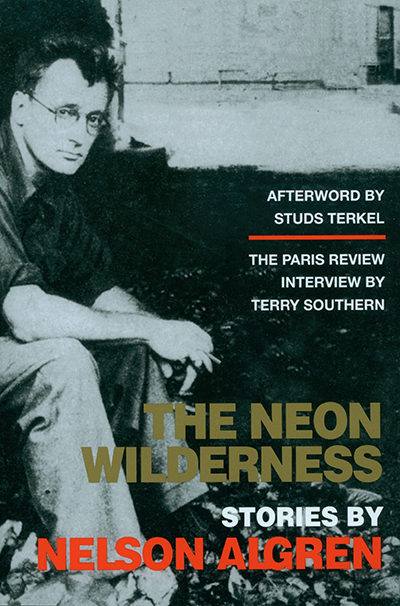
President, Chicago Literary Hall of Fame
“I love Henderson the Rain King not only for the lively, energetic, smart writing—comic and serious by turns and as close to a page-turner as Saul Bellow ever got—but because it played a central part in drawing me to Chicago, where I managed to fashion a career at Columbia College, engage with a host of wonderful colleagues and friends, and, ultimately, live a life that so often responded to that urgent voice in my ear, whispering, ‘I want.’ ”
Read more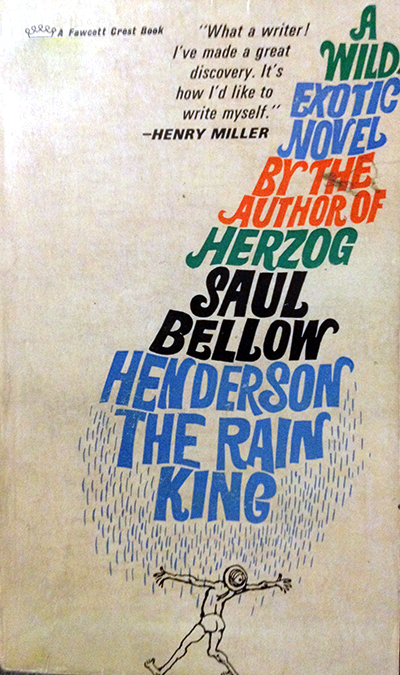
Author
“In the mid-1970s, I was teaching at Highland Park High School. I liked to ask students to have conversations with people about their jobs and then write down what they had learned. Working made these youngsters feel like they were part of a larger project. They could take the book home and read about Frances Swenson, the switchboard operator; Phi Stallings, the spot welder; Nora Watson, the editor; Elmer Ruiz, the gravedigger, and the hundreds of other individuals that fill this magnificent collection.”
Read more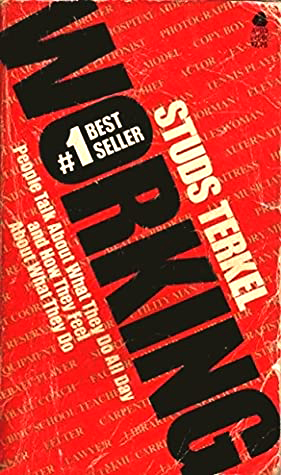
Writer
“What swept me up in this journey, along with the richly developed characters and their fascinating and often heartbreaking stories, was how the city came to life for me in those pages—from Unabridged Bookstore to the 1986 Pride Parade to Marina Towers to Ann Sather to Illinois Masonic Hospital to Lincoln Park Zoo to the gorgeous apartments in Boystown—along with the beauty and strength of a community that comes together amid tragedy and devastation.”
Read more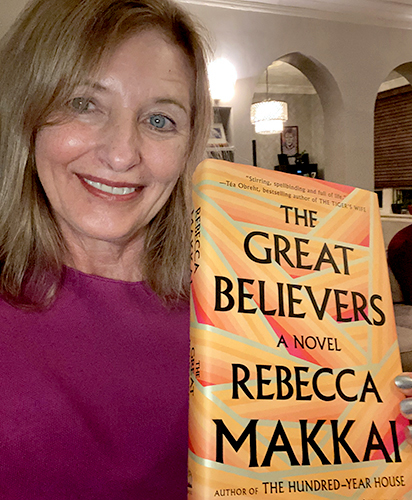
Writer
“So. You’ve read In The Mecca by Gwendolyn Brooks. And now you approach Chicago buildings wondering. Not about their locations on a map but the geography of resident souls.
This book speaks to me. It isn’t really about the Mecca Building. The building is merely the vessel for the true Chicago landmarks: the people inside. So. You’ve read In The Mecca and now you know how Gwendolyn Brooks took the special and the specific and gave us windows into the worlds of our neighbors and the worlds within ourselves.”
Read more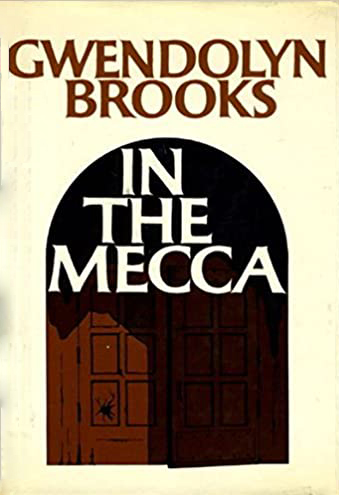
Author
“Every day Ben Hecht simply told another story that featured a Chicago character, not heroic, not politically enmeshed, sometimes typical, sometimes unique. These were not prologues to the news; they were shapely, sympathetic, often enigmatic glimpses of individual men and women (somewhat more of the former than the latter) who walked the streets or sat at the tables or lay awake at night in the metropolis that throbbed around them oblivious to their pain or confusion or, though more rarely, delight.”
Read more
Author
“Ordinary People is the coming-of-age story that most resonated with me back in the days when I was coming of age myself. The novel spotlights a teenage protagonist wrestling with life and death on Chicago’s North Shore. There’s nothing quite like the zing of reading about adolescent angst when one is rattled by one’s own adolescent angst. Ordinary People was the first book to tell me: ‘You are not alone.’ ”
Read more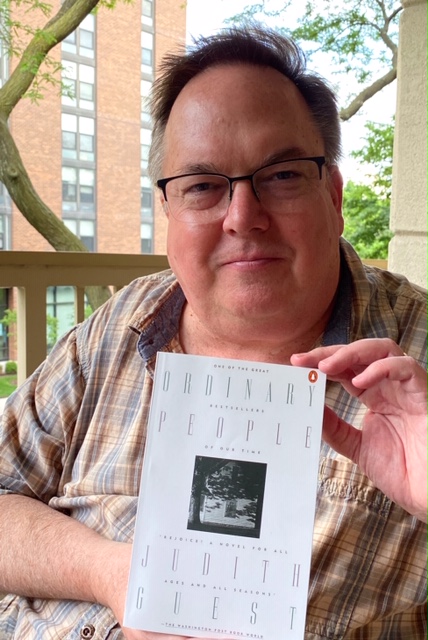
Author
“When I read Dandelion Wine, it was the first time I could truly visualize the overarching story as I read it. It was the first time I became part of the story. It was the first time I experienced words and sentences strung together in such a unique way: literature with doses of realism and lyrics and poetics. He hooked me! I thought to myself: I want to be able to write a book like that someday.”
Read more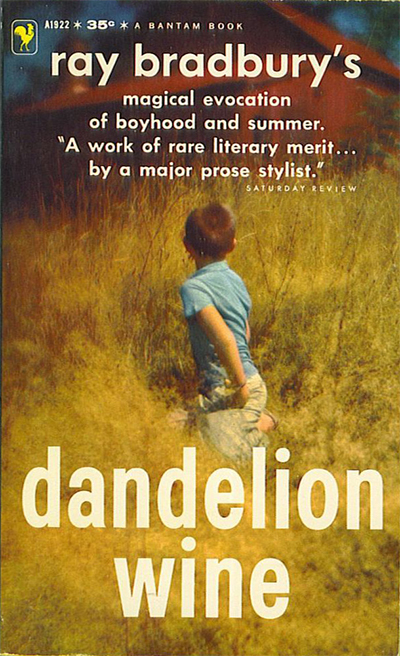
Author
“Addams. Brooks. Chicago. ‘When and how you read the work’ does not apply. I do not remember being the person I am now without carrying this poem along my path.
When local giant of social action Jane Addams meets the mighty pen of our Gwendolyn Brooks, literary sparks fly. Brooks has insight into the types of people that Addams had to navigate through to achieve change, never leaving hold of her moral compass.”
Read more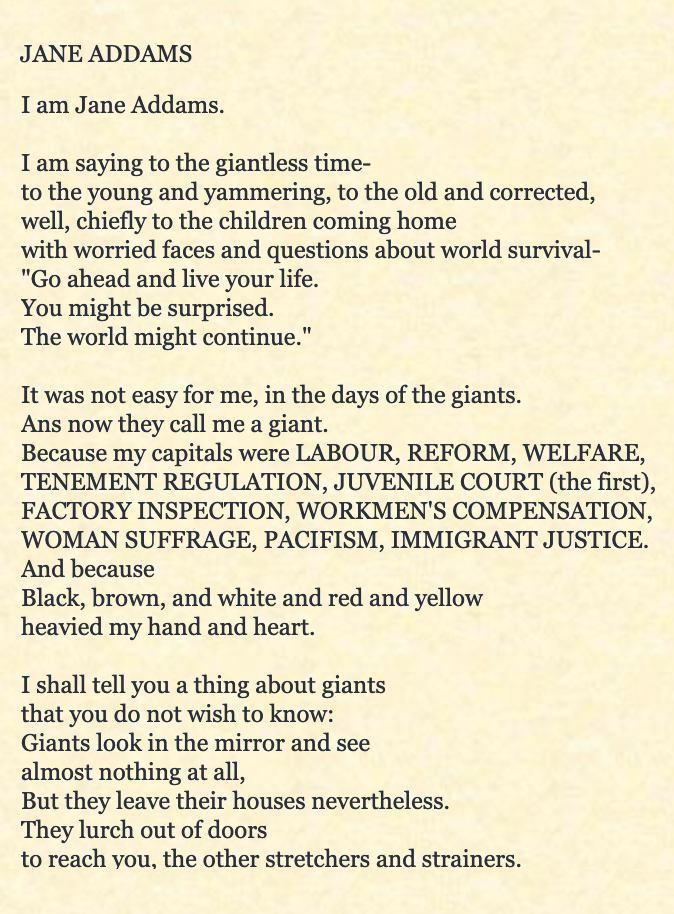
Poet
“City On The Make overflows with colorful colloquial language and sensual descriptions of Chicago and its people. But poetically, the book vibrates as does the music of Chicago with all its rhythms and sounds, jazz and el trains. Though Chicago: City On The Make may be historically dated, Algren’s Chicago reality becomes tactile, visceral and enduring in its truth. Our culture and swagger, the accent of our speech, all the dark sides and corruption of Chicago are what make her the loveliest of lovelies to this day.”
Read more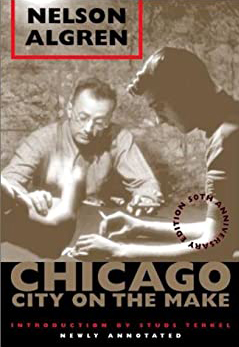
Author
“This novel’s characters were all from my hometown. Their lives were far more privileged than my own, but I could imagine. They met for drinks at the Blackstone Hotel and lived in fine homes on Astor Street and Lake Shore Drive, addresses that sparkled with elegance and possibility. Addresses I remembered from the backseat of my father’s Buick. These were the people behind all those windows looking out over the lake.”
Read more
Writer
“Sister Carrie is the story of a young girl coming to the big city from rural Wisconsin in hopes of finding the American Dream. Dreiser divides Carrie’s story into two separate paths of survival, with Carrie becoming the mistress to two men. But it is Chicago itself that also seduces her, with its palpable energy and opportunities. As Carrie walks Van Buren Street and Jackson and Washington boulevards, and drives along Michigan Avenue, she senses the possibilities that are always just beyond her reach.”
Read more
Author
“I loved this story because I, too, grew up on Chicago's South Side. I remember when Dr. Martin Luther King, Jr. walked through the all-white neighborhood of Marquette Park with several thousand others to clarify fair housing. He had a dream. A Raisin in the Sun is about dreams deferred, but I took it as a message to work my dream and not bow to those who were afraid of courage and perseverance.”
Read more
Artist
“I don't know that I ever read my daughter the whole book. I treated it like a bookshelf full of story books. Some stories we read over and over, others we dipped into just once.
Our favorite way to read Rootabaga Stories was on the front porch on a warm summer evening, with the cicada chorus playing in the background. Sometimes she sat in my skirt, using it to swing between my knees.”
Read more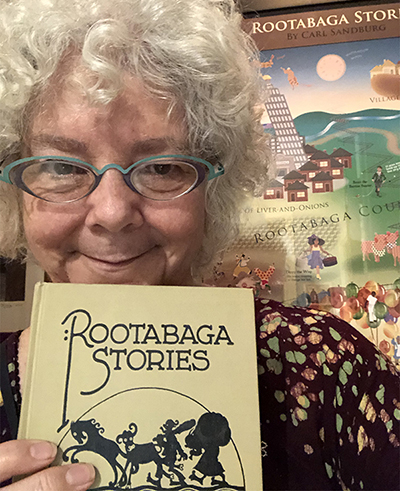
“I discovered Chicagoan Kenneth Fearing many years ago through his signature work, The Big Clock. Fearing was my introduction to a dark, bleak world where chance encounters with dangerous strangers were likely to have a deadly outcome, a world in which double-crossing, lying, and cheating were considered necessary inter-personal and business skills. Forgotten authors who can take you in a new, surprising, and unexpected direction through a single book deserve a first reading by a new generation.”
Read more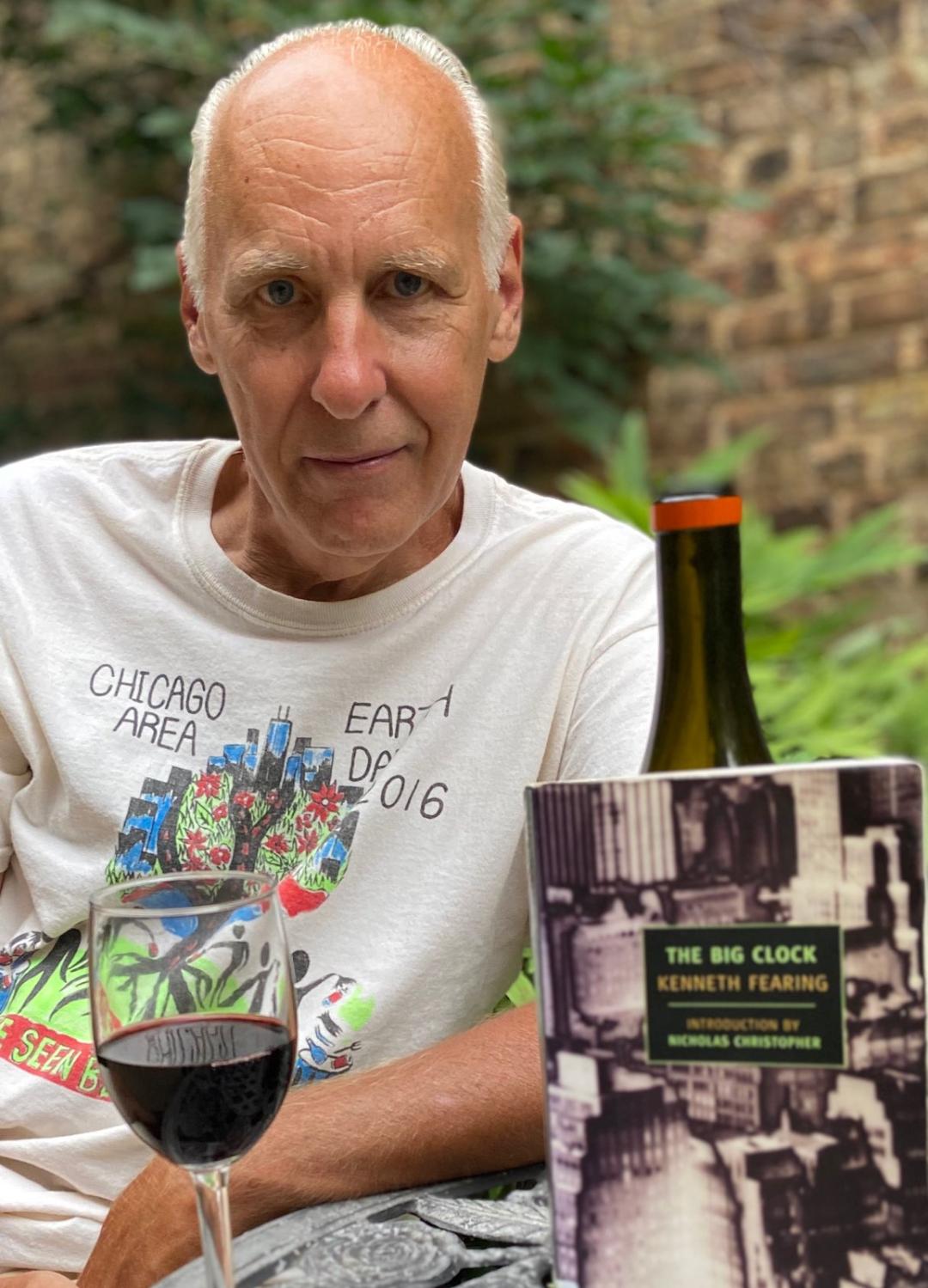
“Back in the 1970s, Nicole Hollander’s Sylviacomic strip sparked the start of my day. Outspoken Sylvia gave voice to the thoughts I shared with many other women. Hollander’s recent graphic memoir, We Ate Wonder Bread, reveals her 1940s Chicago roots from her vantage point in a world razed by the Eisenhower Expressway. She inspires my explorations of my Russian Jewish immigrant family from Maxwell Street out to Lawndale.”
Read more
Writer & Executive Director of the Chicago Poetry Center
“I opened up Electric Arches to find poems, stories, images, textual art, and my heart soared. We can do this now? We can do this now! The book has no genre just as it has no limit to its imagination and its ability to envision new and better futures for Chicago. When I read Electric Arches, I feel it in my body. As I inhabit it, my muscles relax. I can feel myself become lighter inside the author’s possibilities.”
Read more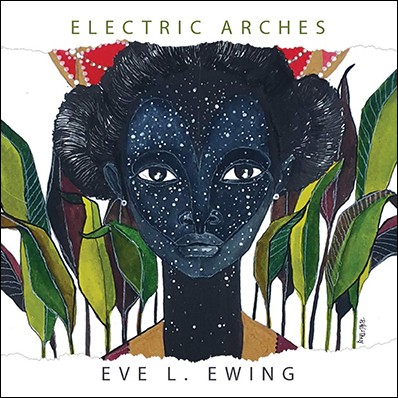
Co-Host, Sunday Salon Chicago
“On Carrie’s first night at her sister Minnie’s apartment – 354 W. Van Buren Street – I look out the window with her and hear horse-car bells for the first time and am entranced by city lights. And the following day, I experience Chicago’s hardness when Carrie can’t afford more than a cup of soup at a diner, and she struggles to find work along LaSalle, Madison, Dearborn, and Monroe Streets. Remarkable, how much and how little has Chicago changed.”
Read more
Writer
“Jefferey Renard Allen’s prose calls to mind Baldwin circa Just Above my Head as much as Forrest’s dissonant dreamscape in Divine Days. There is lyric poetry to be had in the quiet space between words, in the margins, too. Studied sublimity in what is a no-less original work. Yes, it is American folklore, black and bloody. But it is the ethereal and the carnal seen by the foreign that compels me in Rails Under My Back. Work well worth study, even more so worthy of reading eyes. Souls move through these pages.”
Read more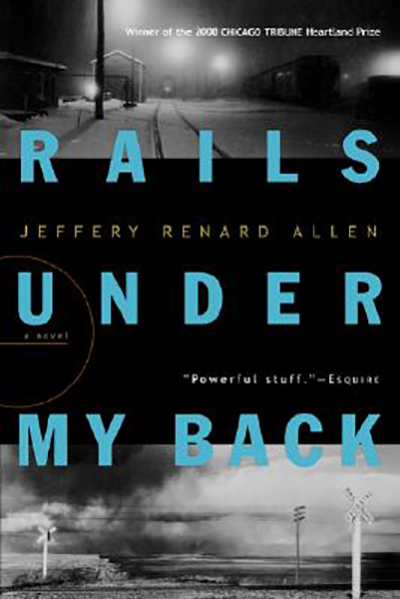
Chicago Center for Literature and Photography
“Humboldt’s Gift was the very first book I ever read that described a real neighborhood I was already familiar with, which was a quiet revelation to me. The book made me realize the sublime pleasures of seeking out the real places described by Social Realist authors like him, and Chicago is an excellent location for doing just that, whether that’s with authors of the old guard like Studs Terkel and Stuart Dybek, or the mise-en-scène adventures of more contemporary writers like Aleksandar Hemon or Chris Ware.”
Read more
Author
“Native Son is noir as hell. Maybe that’s my prejudice as a crime writer, to find overlap between the genre that gets called, with derision, “airport reading” and the capital-L literary novels. But Richard Wright’s Native Son is real-deal noir: a dark story that kneecaps the reader with an unexpected crime, takes them deeply into the mind of a killer on the run, and then ends with—it’s Chinatown, Jake.”
Read more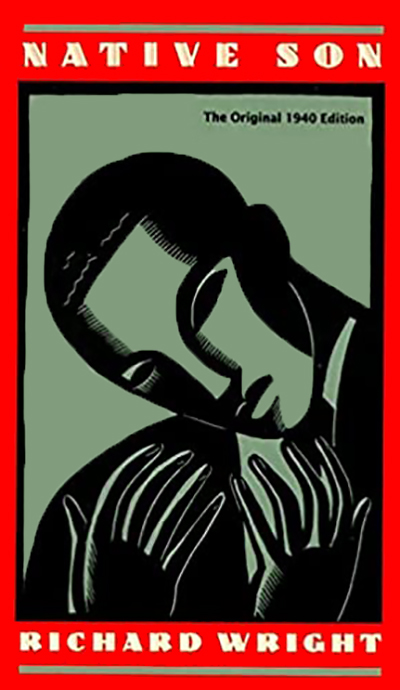
Writer
“Meyer Levin’s The Old Bunch is Chicago’s ‘great Jewish novel.’ It follows a group of Jewish young people living on the West Side’s Lawndale neighborhood in the 1920s and 1930s. They are the sons and daughters of Eastern European immigrant Jews who are aspiring to live ‘the American Dream,’ even when they are hard hit by the Great Depression. The Old Bunch especially resonates with me because I see so much of my mother and father, uncles and aunts, and their friends in Levin’s characters.”
Read more
President, Chicago Writers Association
“Boss is a slim 210 pages but its weight is still tremendous in what it captured about a city then and now. While Boss did capture a moment in time, it’s hard to read it today and not see some striking parallels to our city and our country. All of which makes it a timeless classic, one that inspired this former newsboy to become a journalist and a writer who still strives to write like Mike.”
Read more
Author
“Stuart Dybek’s The Coast of Chicago—a story collection that has lurked very close to the front door of my mind since I first read it years ago—is one of those books that makes me feel most hopeful and alive. Like his indelible characters, I too get to scavenge for bottle caps in reeking alleys and drag race past bars named Fox Head 400 and Edelweiss Tap when I read these stories.”
Read more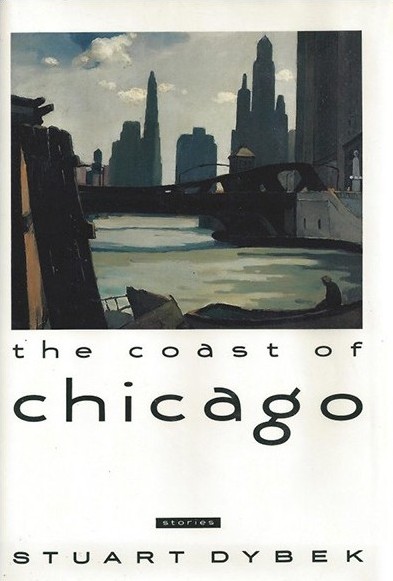
Author
“The Short History of a Prince is a wonderful novel full of beautifully drawn characters, and a great Chicago novel, for the city and its environs are lovingly rendered and expertly woven in and around the fabric of the story. Jane establishes the L as a key personality trait of the city and pens a brief ode to the Chicago alley. These and a myriad of other lyrically described Chicago details make The Short History of a Prince my favorite Chicago novel.”
Read more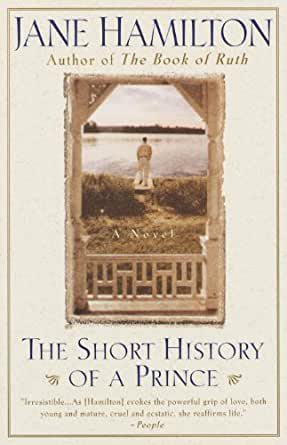
Chicago Literary Hall of Fame
Email: Don Evans
4043 N. Ravenswood Ave., #222
Chicago, IL 60613
773.414.2603